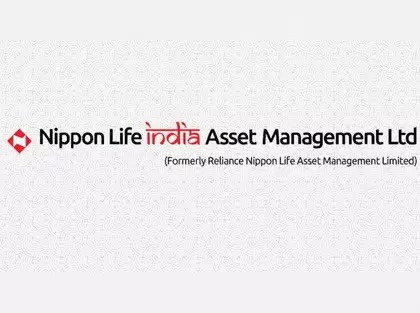Nippon Life India Asset Management Ltd (NAM India) has kicked off FY26 with a robust financial performance, reporting a consolidated net profit of Rs 3.96 billion and revenue from operations of Rs 6.07 billion for the quarter ended June 2025. The results reflect the company’s continued dominance in the asset management space, supported by strong investor flows, operational efficiency, and a diversified product portfolio.
Quarterly Performance Snapshot
The June quarter results underscore NAM India’s ability to sustain profitability in a competitive and evolving investment landscape.
Key highlights from the earnings report:
- Consolidated net profit rose to Rs 3.96 billion, reflecting a healthy year-on-year growth trajectory
- Revenue from operations reached Rs 6.07 billion, driven by higher average assets under management (AUM) and improved fee realization
- Operating margins remained strong, supported by cost discipline and digital process optimization
- The company maintained a debt-free balance sheet, reinforcing financial stability and investor confidence
NAM India’s performance was buoyed by steady inflows into equity and hybrid schemes, as well as continued traction in passive investment products.
Business Drivers and Segmental Insights
The company’s growth was powered by its diversified offerings across mutual funds, portfolio management services, and alternative investment funds. Retail participation remained strong, with SIP inflows contributing significantly to recurring revenue.
Operational insights:
- Equity AUM saw double-digit growth, supported by market appreciation and net inflows
- Passive products including ETFs and index funds gained momentum, reflecting investor preference for low-cost options
- Institutional mandates remained stable, with increased interest from pension and insurance clients
- Digital onboarding and investor servicing platforms improved engagement and reduced turnaround times
NAM India’s omni-channel distribution strategy and focus on investor education have helped expand its reach across Tier 2 and Tier 3 cities.
Strategic Initiatives and Shareholder Value
The company continues to invest in technology, product innovation, and brand building to strengthen its market position. Recent initiatives include ESG-focused fund launches and AI-driven advisory tools.
Additional developments:
- Final dividend of Rs 10 per share announced in April 2025, with an effective date of July 4
- Reminder letters issued to shareholders regarding unclaimed dividends and IEPF transfers
- Ongoing efforts to enhance transparency and governance through improved disclosures and board oversight
- Continued focus on expanding the retail investor base through targeted campaigns and partnerships
NAM India’s shareholder-friendly policies and consistent dividend payouts have contributed to its strong market reputation and investor loyalty.
Market Outlook and Competitive Landscape
India’s asset management industry is poised for sustained growth, driven by rising financial literacy, regulatory support, and increasing household savings. However, competition remains intense, with fintech platforms and new entrants challenging traditional players.
Sectoral trends to watch:
- Shift toward passive and thematic funds, especially among younger investors
- Regulatory emphasis on cost transparency and investor protection
- Consolidation among smaller AMCs to achieve scale and operational efficiency
- Growing demand for retirement and goal-based investment solutions
NAM India’s scale, brand equity, and product depth position it well to navigate these trends and capture incremental market share.
Final Takeaway
Nippon Life India Asset Management has delivered a strong start to FY26, with solid earnings and operational momentum. Its strategic focus on digital transformation, product innovation, and investor-centric solutions continues to drive growth and resilience. As the asset management landscape evolves, NAM India’s disciplined execution and forward-looking approach make it a standout performer in the financial services sector.
Sources: Moneycontrol, Business Standard, Trendlyne, Economic Times, Hindu BusinessLine, Reuters, NAM India corporate filings
